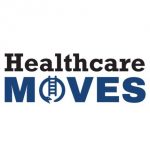Does Medicare Part B increase or decrease the prices of physician-administered drugs relative to physician-administered drugs covered by private insurance? That is the question a paper by Acquatella, Ericson and Starc (2023) aim to answer.
Before we answer that question, we first need to understand how Part B works, how physicians are reimbursed, and how much Medicare beneficiaries have to pay:
“Part B has a buy-and-bill policy, in which physicians purchase drugs (either on their own, or as part of a group purchasing organization)…The provider pays a price to the manufacturer that is averaged to construct an average sales price (ASP). The provider is then typically reimbursed at lagged ASP times a multiplier, here 106% the ASP from two quarters ago. The out-of-pocket costs for the patient are 20% of the reimbursed amount in the form of coinsurance; the Medicare program covers the remaining 80%.
How do the authors identify the impact of Part B on drug prices?
Our identifying variation comes from drugs that are more or less exposed to Part B: the share of expenditures for a drug that comes via Medicare Part B, as opposed to private insurers. A similar research design is used by Yurukoglu et al. (2017)…
What data do they use?
We construct a sample of prices and Medicare market shares for physician-administered drugs spanning 2006 through 2019. Our unit of analysis is the drug-quarter, where drugs are uniquely identified by Health Care Procedure Coding System (HCPCS) codes. We combine data from three sources: pricing files, aggregate Medicare claims, and Truven Marketscan spending aggregates….We obtain Medicare’s aggregate drug payments from the CMS Part B National Summary Data File, which contains yearly data on aggregate payments for each HCPCS code in by Part B. We obtain aggregate private drug payments at the HCPCS-year level using Truven MarketScan data for each year.
Using this approach, what are the authors results?
Drugs more exposed to Medicare have lower price growth. A drug with above median Part B exposure has a 10% lower price after 3 years than a below median exposure drug that launched at the same price, with a larger effect for newly approved molecules.
You can read the full paper here.





